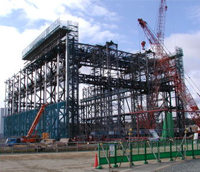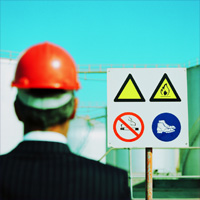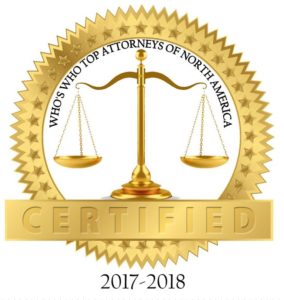AN OVERVIEW OF NEW YORK STATE LABOR LAWS
08/22/18

The construction industry has long been one of the major engines that drive New York State’s economy. The skylines of the State’s major cities are routinely erased and redrawn to address the constantly shifting needs of its business communities and residents. Predictably, this almost manic construction activity has created a need to address the rights of workers injured at construction sites. The Legislature has responded with the passage of specific statutes defining and or creating rights of recovery for the injured construction worker.
The construction statutes address the reality in New York that a direct cause of action for personal injury cannot be brought against an employer by an employee as long as the employer maintains worker’s compensation insurance. In a construction setting this forecloses injured workers from suing their employers directly despite the fact that in most cases it is the employer’s failure to properly supervise the manner and method of the work performed that is the actual cause of plaintiff’s injury. Rather then consign injured workers to compensation benefits only, the Legislature through the operation of Labor Law 200, 241(6) and 240 allows workers to bring suit against property owners and or their agents, typically general contractors, for injuries sustained at construction sites. The following is a brief overview of these statutes and their operation.
Labor Law 200 is a codification of common law negligence principles. To hold an owner or general contractor liable under the statute plaintiff must demonstrate that: 1) a dangerous condition which proximately caused plaintiff’s injury existed; 2) that the owner/general contractor knew or should have known of the condition with sufficient time to cure same and 3) that the owner/general contractor exercised sufficient control over the worksite and or the manner and method of plaintiff’s work that it would be reasonable to conclude that the owner/general contractor was in a position to remedy the dangerous condition. Courts have consistently held that general supervisory capacity at a construction site such as ensuring plans and specifications are being followed, coordinating trades on the job, enforcing time schedules and general safety inspections are insufficient predicates to visit Labor Law 200 liability on an owner/general contractor. Typically, unless the owner/general contractor directs the plaintiff in the particulars of how his work is to be performed as opposed to more general instructions to a foreman that the work is to be commenced/completed, Labor Law 200 liability will not lie.
 Labor Law 200 is a negligence statute and therefore plaintiff’s recovery will be proportionally diminished by his own negligent conduct. Additionally, since by statute, a negligent party cannot be indemnified for its own negligence in a construction setting, an owner/general contractor found liable under Labor Law 200 cannot pass the loss to another party by operation of common law or contract. Although routinely pled in construction accident cases, Labor Law 200 is rarely a viable vehicle of recovery for plaintiffs. Owners/general contractors typically do not exercise the degree of control necessary at the jobsite to be charged under the statute.
Labor Law 200 is a negligence statute and therefore plaintiff’s recovery will be proportionally diminished by his own negligent conduct. Additionally, since by statute, a negligent party cannot be indemnified for its own negligence in a construction setting, an owner/general contractor found liable under Labor Law 200 cannot pass the loss to another party by operation of common law or contract. Although routinely pled in construction accident cases, Labor Law 200 is rarely a viable vehicle of recovery for plaintiffs. Owners/general contractors typically do not exercise the degree of control necessary at the jobsite to be charged under the statute.
Labor Law 241(6) is a hybrid statute which imposes vicarious liability on an owner or general contractor for the negligent acts of another, normally plaintiff’s employer, which proximately cause plaintiff’s injury. Although it is a negligence statute plaintiff is not required to demonstrate negligent conduct on the part of the owner/general contractor nor is plaintiff required to demonstrate notice of the dangerous condition or activity to the owner/general contractor.
In order to prevail, plaintiff must plead and prove a violation of a specific, self executing New York Code Rules and Regulation section. NYCRR contains a myriad of regulations typically found in Chapter 23, referred to as The Industrial Code, which govern work site safety. Plaintiff in his pleadings must identify which code provisions were violated which caused plaintiff’s injury. Further, these code provisions must be specific and self executing such that their proper application may be divined from the face of the regulation alone. Thus, a regulation that merely provides that “proper safety devices” must be employed would be too general and therefore insufficient to base a Labor Law 241(6) action on while a regulation that specifically named and described the device to be employed would support a cause of action. As one might expect Labor Law 241(6) has generated significant reported decisions identifying those regulations which are specific and self executing and those that are not. Legal research is typically required to determine the viability of any one regulation cited by plaintiff. Most often plaintiffs will employ a “shotgun” approach citing as many regulations as feasible to keep all possible recovery options open.
If a self executing regulation has been violated it is some evidence of negligence which the jury must consider. Since 241(6) is a negligence statute the negligence of the plaintiff will proportionally diminish his recovery. As set forth above an owner/general contractor found liable under Labor Law 241(6) is answering for the conduct of another. Such a finding does not equate to a finding that the owner/general contractor was itself negligent and therefore that loss can be passed through to the responsible/negligent party through contract or in certain instances by operation of common law indemnity principles. Labor Law 241(6) is typically invoked in cases where plaintiffs are injured in trip and fall accidents either at their actual work site or in passageways/hallways leading to the worksite. Labor Law defendants however need to be cognizant that while debris and other tripping hazards will invoke 241(6) liability, instrumentalities that are endemic to the work being performed, such as mesh wire laid for poured concrete, will not trigger liability since it is neither debris nor a tripping hazard.
Labor Law 240 is by far the most controversial and litigated statute which creates liability for an owner/general contractor in a construction setting. Its permutations and nuances fill thousands and thousands of pages of reported decisions. What follows is the briefest of overviews.
The statute was passed in recognition of and in response to the unique dangers presented workers employed in the construction of high rise buildings. It provides that workers engaged in various enumerated construction activities including erection, demolition, repairing, painting and cleaning of buildings and structures must be provided proper protection such as scaffolds, ladders, hoists and other like devices to safely carry out their work. The responsibility of ensuring that such devices are provided and properly used at a construction site is delegated to owners of the property and their agents, typically general contractors. While the wording of the statute appears simple and straightforward its application has been anything but.
Labor Law 240 is not a negligence statute. It has been interpreted to impose absolute liability on an owner or its agent if the statute is violated. Plaintiff’s own negligent conduct is immaterial to the inquiry and will not proportionally reduce an award unless it can be demonstrated that the conduct of the plaintiff was the sole proximate cause of the accident in which case the statute will not have been violated and no recovery will be had. In order to recover under the statute plaintiff must only demonstrate that he was not furnished with proper protection at the job site or that the protection furnished failed to protect him from injury. Once demonstrated, if the violation of the statute is found to be a proximate cause of the injury plaintiff is entitled to a full recovery from the owner/agent. As stated above the statute is not a negligence statute and therefore notice of the condition and control of the site are not elements of plaintiff’s proof.
The statute is often referred to as “the scaffold law” since it is the first device listed in the statute and is representative of the type of device to which the statute speaks. Courts have interpreted Labor Law 240 to apply to those injuries suffered as the result of the application of gravity such as falls from a height or workers being struck by falling objects. Thus, workers who fall from an elevated work site because they have not been furnished with a scaffold or ladder from which to work or because the furnished safety device malfunctioned or failed are classic Labor Law 240 plaintiffs. Similarly plaintiffs injured by falling debris or tools from an elevated worksite are entitled to recovery under the statute.
 Because the proof required for recovery, injury as the result of a gravity related accident, is relatively simple liability issues lend themselves to summary judgment disposition. Defenses to 240 liability include “sole proximate cause” mentioned above as well as the “recalcitrant worker defense”, the specifics of which are so exacting it is rarely successfully interposed. Issues normally raised in Labor Law 240 litigation include whether the plaintiff was engaged in activity covered by the statute, whether the accident occurred as the result of a height differential such that gravity was invoked and whether the accident was of the type that the statute was passed to prevent. It is important to understand in evaluating 240 cases that Courts are charged with reading the statute as broadly as possible to provide recovery for injured workers. As such all legal questions are typically resolved in the plaintiff’s favor.
Because the proof required for recovery, injury as the result of a gravity related accident, is relatively simple liability issues lend themselves to summary judgment disposition. Defenses to 240 liability include “sole proximate cause” mentioned above as well as the “recalcitrant worker defense”, the specifics of which are so exacting it is rarely successfully interposed. Issues normally raised in Labor Law 240 litigation include whether the plaintiff was engaged in activity covered by the statute, whether the accident occurred as the result of a height differential such that gravity was invoked and whether the accident was of the type that the statute was passed to prevent. It is important to understand in evaluating 240 cases that Courts are charged with reading the statute as broadly as possible to provide recovery for injured workers. As such all legal questions are typically resolved in the plaintiff’s favor.
An owner or contractor found liable under Labor Law 240 is not adjudged to be negligent. Thus liability can be passed by contract or in limited circumstances by operation of common law to another party. Typically this is the only “defense” available to an owner/general contractor in a Labor Law 240 case. Since a plaintiff’s recovery is not diminished by his own negligent conduct Labor Law 240 actions are most attractive to the plaintiff’s bar and typically result in the highest awards/settlements.
Return

